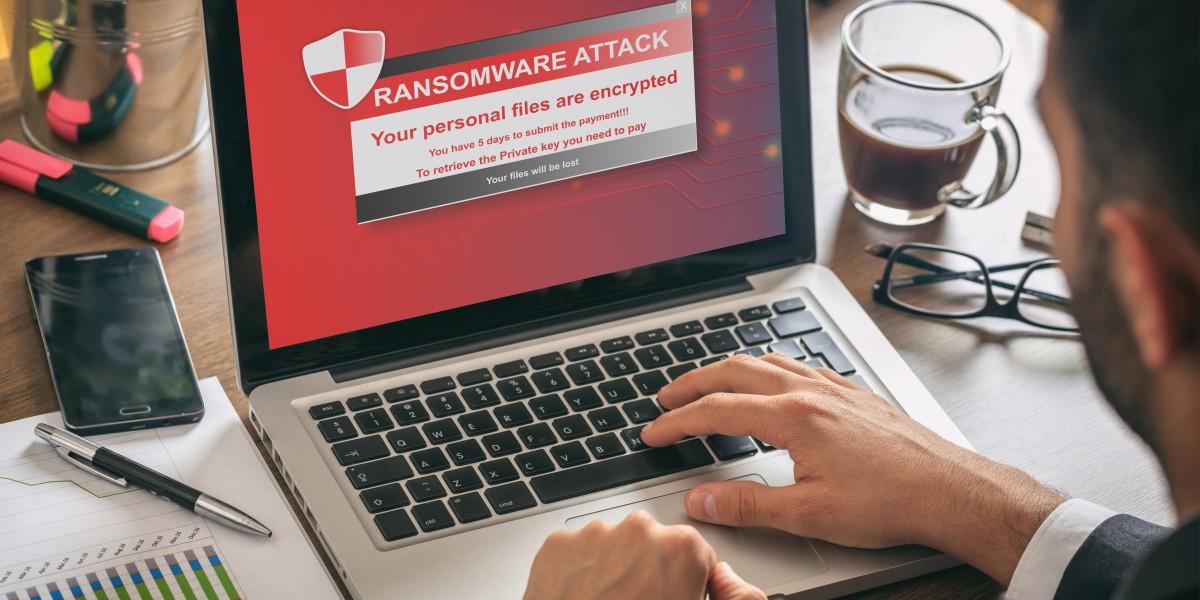5 Best Practices For A Strong Cybersecurity Culture
A cybersecurity strategy is a plan that organizations leverage to improve security. It is a top-down approach that outlines how an organization...
8 min read
 Karen Kiewski
:
Jan 26, 2021 10:00:00 AM
Karen Kiewski
:
Jan 26, 2021 10:00:00 AM

Modern technology has introduced a number of conveniences for both individuals and businesses. However, as many of the top online breaches of recent memory highlight cyber attacks enabled by the abundant use of (and reliance on) modern IT solutions mean that companies of all sizes need to have a solid strategy for dealing with cybersecurity.
What is cybersecurity? Why is it important? What are some of the cyber threats that your business has to be prepared for? What can you (and the employees in your organization) do to minimize online threats and risks?
Cybersecurity is the blanket term for the processes, practices, and tools that an organization uses to protect itself from cyber threats. In general, this means keeping malicious actors (both internal and external) from being able to damage or abuse the organization’s IT infrastructure.
Cybersecurity is important for several reasons, including:
These are just a few of the reasons why cybersecurity is important.
Part of maintaining a strong cybersecurity architecture is knowing about the cybersecurity threats that are out there and taking steps to prepare for them. Listing all of the specific “threat signatures” that have been identified is an impossible task—according to data cited by CSO Online, in 2019 alone, Kaspersky’s “web antivirus platform identified 24,610,126 ‘unique malicious objects.’”
That’s just the malware threats identified by a single vendor!
Instead of trying to list every cyber threat ever conceived, it may be more productive to highlight a few specific cyber threat types and how they work:
Malware is a portmanteau of “malicious software.” Basically, it’s harmful software that a malicious actor tries to sneak onto their target’s system in order to carry out their attack.
Malware can be subdivided into a broad range of malicious programs depending on what the malware does. These malware can help form the basis of other cyber attack strategies.
For example, a malware program that installs SQL injection code can create a backdoor into a system for hackers to use later. Or, an encryption program could encrypt all of the data on a network—rendering it useless without the encryption key (more on this in a bit).
While no protection is perfect, having at least a basic antivirus program on all network endpoints (computers, smartphones, etc.) is a must for detecting and countering common malware programs.
Ransomware is the specific type of malware that encrypts data on a target’s network so that data becomes unusable. After the encryption happens, the attacker sends a demand for payment in return for the encryption key—effectively holding the victim’s data for ransom (hence the name ransomware).
One of the strongest defenses against ransomware attacks is the use of data backup and recovery solutions. With a remote data backup, businesses can format their corrupted drives and then re-download the lost data from their backup solution. While this can take some time and may result in at least some data loss depending on how frequently information is backed up, it’s still better than paying a ransom to maybe get the encryption key.
Phishing is the name for a type of attack wherein the attacker sends their target messages meant to trick their victim into taking some kind of action—such as clicking on a link to a malicious or fake website, surrendering sensitive information (like user credentials or financial data), downloading malware, or approving a bogus invoice.
Phishers often pose as vendors or as higher-ups in the company, spoofing email addresses, email letterheads, and more to make their fake messages more believable and effective.
Employee training is often the first line of defense against phishing attempts. Additionally, there are automated solutions that can help identify spoofed emails and other warning signs of a phishing email or message and flag them for users.
RELATED: Everything You Need to Know About Spear Phishing
DDoS attacks are when an attacker attempts to overload a target’s network so that it cannot process any normal traffic or requests. Attackers frequently use large botnets (arrays of malware-compromised computers or IoT devices) to carry out DDoS attacks and mask the source of the attack.
DDoS attacks can paralyze a company’s systems for hours, days, or weeks depending on the scale and type of the attack and what protective measures the company has in place.
It’s important to note that DDoS attacks can vary in nature between brute-force attacks that just send lots of request pings, application layer attacks that target specific vulnerabilities in the software on the target’s systems, and protocol attacks that target firewall or load balancer handshake protocols to overload those resources.
So, defending against a DDoS attack isn’t always easy—what works to stop one attack may not stop a different one. Here, having some expert help can be invaluable.
The above cybersecurity threat types are just a few of the more well-known examples that businesses have to contend with every day. But, what can companies do to combat these online threats?
While there is no absolute guarantee of security—any organization’s defenses can be breached with enough time, effort, skill, and/or luck—there are some things that businesses and their employees can do to help minimize their risk from various cybersecurity issues. Here’s a short list of some cyber safety tips for businesses:
This is a very basic piece of advice that gets shared a lot, but it bears repeating almost no matter how many times you may have heard it. Using strong passwords and setting policies to govern user account safety is vital for information security.
Passwords should be difficult to guess and fairly complex to make them harder for attackers to crack. Some basic guidelines include:
Employees should be made to understand that they should never give their password to anyone, even someone who says they’re the employee’s boss or a system admin (odds are neither of these people will even need the password to access the employee’s business accounts).
An example of a weak password would be something like “qwerty” or “books.” Both of these are short, commonly-used, and easy to guess (one because it’s the top six alphabet keys on a keyboard, the other because it’s a short, common word).
A strong password would be something like: “Qtl48%^P>nmWb$.” This would be near-impossible for a person to guess. However, it’s also almost impossible to remember—especially if it’s one of 10 similarly complicated passwords. This is why many companies have their employees use password management tools like 1Password. Instead of having to memorize 10 passwords for ten different sites, a password management software plugin can create and save these passwords for the employee so they only have to remember one highly complex password.
To protect all of the IT assets a business has and close every vulnerability that might exist requires having an accurate and thorough map of the business’ IT assets and resources. Every IT asset, including IoT devices, computers, software, servers, etc. needs to be accounted for. Otherwise, there could be devices with obsolete security, unaccounted-for gaps in the company’s network security, and other unknown vulnerabilities on the network.
Business processes for IT asset lifecycle management can help a company track old assets that are being removed and new assets as they’re added. However, it’s also important to occasionally run a check for any unknown or unaccounted-for devices and software that may have been missed.
Why? Because, there’s always a risk of employees bringing personal devices to work, items falling through the proverbial cracks during inventory checks, and other issues that may lead to IT assets not being accounted for in the company’s inventory.
By creating an accurate network map and keeping it up to date, businesses can create more comprehensive and effective cybersecurity strategies. Many companies hire specialized cybersecurity industry companies to help them create this map or update it.
In any organization, the weakest link in the cybersecurity chain is usually the organization’s employees. Malicious actors can target employees with phishing campaigns to trick them into compromising the company’s network and data, employees can accidentally damage or misuse IT assets, and some people may intentionally abuse their access privileges for personal gain.
Teaching employees the basics about cybersecurity issues and how they can practice cyber safety is crucial for making the “human firewall” as strong as possible.
Think of it this way: Who is more likely to fall for a phishing scheme? The employee who has been trained and frequently tested on their knowledge of cyber safety, or the employee who has never heard of what phishing is? Odds are that the first employee is more likely to notice something fishy (or is that phishy?) when an email comes in from their boss asking for their user password and the billing info from their biggest client in the next ten minutes or else.
Training programs should cover the kinds of threats employees are most likely to encounter (like phishing) and have some kind of practical component (such as a simulated attack) to help drill lessons home and show how easy it can be to fall for a cyberattack. It’s all about raising awareness and helping employees know what to do in an emergency so the company’s incident response plan (IRP) can be carried out smoothly.
If there’s an unknown vulnerability on the network, how can it be found and fixed before a malicious actor takes advantage of it? The best way to find and fix these threats is to run vulnerability scans and penetration tests.
A vulnerability scan checks the network for common known vulnerabilities, such as unpatched or out-of-date software. Penetration tests have cybersecurity experts try to act like hackers to stress-test the network for potential weaknesses. In either case, a report is written after the fact detailing any exposed weaknesses and what can be done to eliminate the vulnerability.
One of the best pieces of advice to follow for any endeavor is to look for expert help whenever it’s available. There are countless things that might make one business’ needs and challenges wholly unique from another company’s, even when both are in similar industries. This may mean that your business has specific security needs that a post with generic cybersecurity tips may not fully address.
Finding a cybersecurity industry expert to partner with can make a huge difference for being able to effectively (and economically) protect your business from the biggest online threats that it faces. For example, an IT expert with experience in cybersecurity may be able to help identify less costly alternatives to IT solutions that are getting retired—helping you save money while modernizing your IT portfolio and removing potential vulnerabilities.
RELATED: Data Breaches are Increasing the Need for Cyber Liability Insurance
Cybersecurity companies can help businesses get near-instant access to a large team of experts in different aspects of security. This is immensely useful for gaining the benefits of a team with diverse skill sets for a fraction of the cost (both in time and resources) of trying to recruit and hire those experts internally.
But, where can you turn to for reliable services in the cybersecurity industry? Well, if you found the cyber security information in this article useful, you could consider Systems X! We have a proven history of helping companies with IT issues such as cybersecurity, network performance, enterprise app integrations, and more.
Reach out to Systems X today to start connecting with the future of cybersecurity and IT!

A cybersecurity strategy is a plan that organizations leverage to improve security. It is a top-down approach that outlines how an organization...

Every business today relies on technology and information for every business process. Regardless of industry, tech drives business results. However,...

Manufacturers in Michigan are facing a cyber threat they may not have considered. Large companies may begin to feel quite secure about cybersecurity....